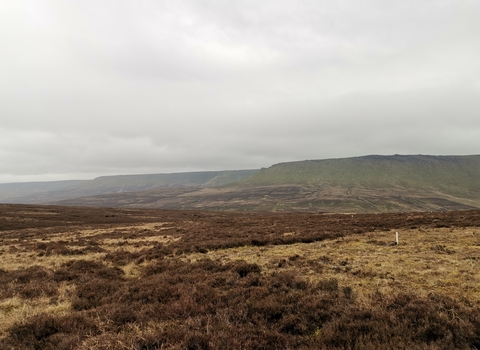
The Peatland Code is an open and transparent process and, in keeping with this, all projects are publicly visible on the UK Peatland Code Registry. The data that you enter for your project registration will appear on the registry.
Registration is an early and important step in the Peatland Code process. A project cannot be registered retrospectively (i.e. works cannot have begun on the site prior to registration). The registry also ensures that sites are not duplicated and therefore avoids the risk of double counting.
Once registered, your project plan validation should be achieved within three years.
When should I register a project?
You should aim to register your project at least one year before works are due commence, in order to achieve project plan validation in a timely manner. This may not be possible for some projects, and a later registration is allowed so long as works do not begin prior to registration.
How do I register a project?
If you have engaged a project developer (link to project support subpage), they will likely register the project for you.
If you are registering the project yourself, you will need to open an account. Before registering a project, please familiarise yourself with the information below and our Peatland Code Registry (link to subpage) webpage. A customer account must be opened before a project can be registered. This type of account, and registering a project, is free.
To register a project you will need to complete the following:
-
A draft project map (which includes the project name and six figure grid reference)
-
A draft Bog Emissions Calculator or Fen Emission Calculator
On the registry:
-
'Additional information' (areas of the different categories and predicted emissions reductions)
-
'Site detail' (location of the project)
-
'Project description'
Please make sure all information matches exactly on all documents and the registry.
Is there a charge if a project is cancelled?
No, there are no costs or ramifications to cancelling a project as long as no Pending Issuance Units (link) have been sold.
What happens when my project is registered?
Once your project is registered, it will be marked as Pending Review – Under Development (3rd Party). This means the project has been submitted and is being reviewed by the Peatland Code team. If there is an issue with the registration, it will be returned to the project developer who then has to address the issue and resubmit. Once approved, the project will be marked as Pending Review – Under Development (Markit) which means that the registration is being reviewed by the IHS Markit (S&P Global Environmental Registry) operations team.
If they find any issues, the registry team will contact the Peatland Code team, who will pass them on to the person who registered the project. These are commonly administrative issues such as a missing grid reference or the project name/start date not being consistent across the map, emissions calculator and registry details.
Once the project is successfully registered, it is classed as Under Development.
How long does it take to register a project once I have submitted it?
This process usually takes between one to two weeks.
How can my emissions calculator and map be accurate so early in the project?
The registration stage is essentially a proof of concept. These are draft documents and are likely to change at validation. The project boundaries and grid reference are required to confirm the site is real, and the emissions calculator should be as accurate as you can make it at this point. If the hectares and condition category are altered by the time validation occurs, it will not affect your project negatively.
Additional Information
Peatland Code Registry
Registry accounts
Registry Fees
Account definitions?
Registry Rules of Use
FAQs

